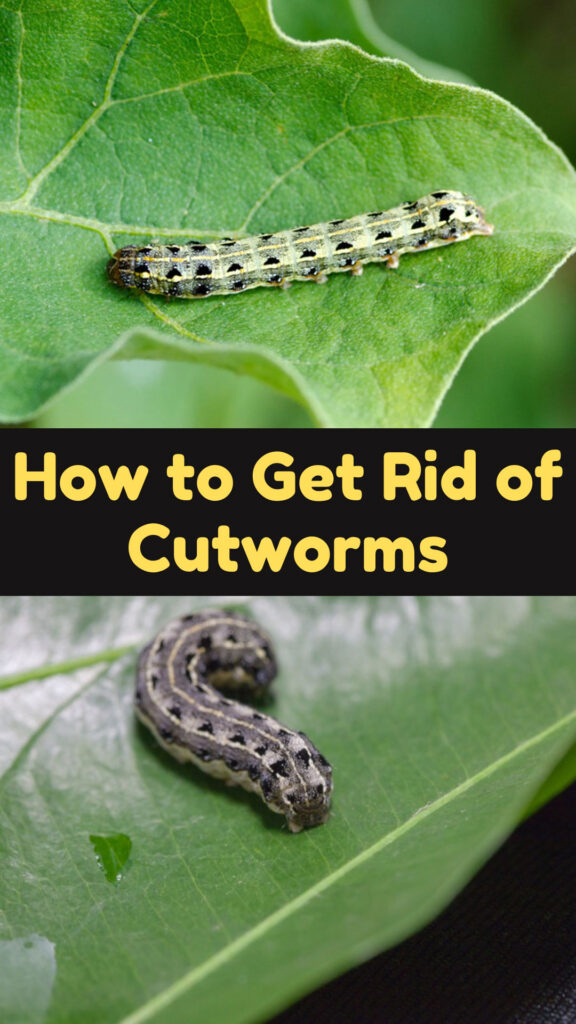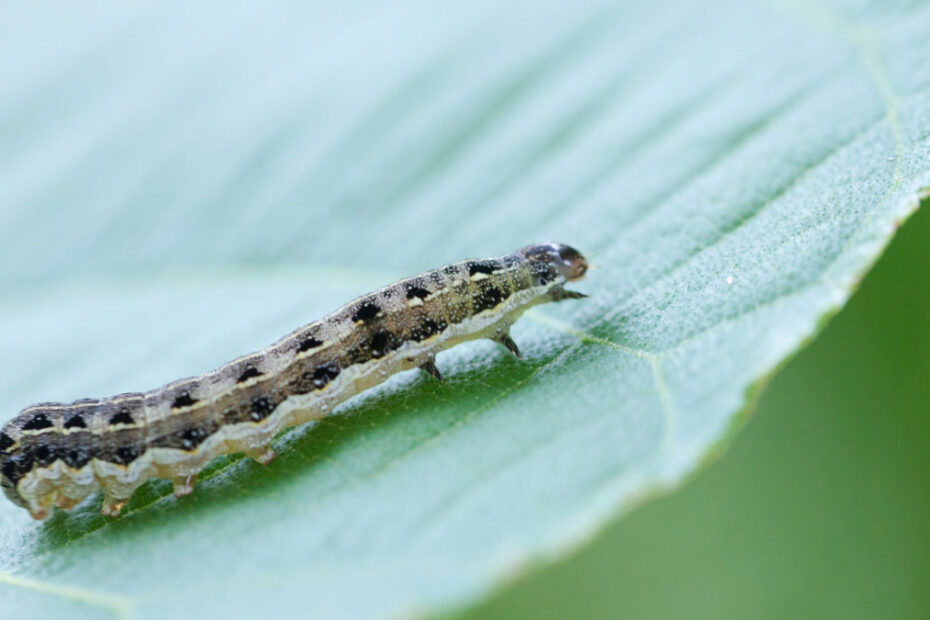Cutworms can wreak havoc on your garden, leaving you frustrated and your plants damaged. These nocturnal pests chew through stems at the base, causing young seedlings to topple over and die. But don’t worry; you can take effective steps to protect your plants and get rid of these destructive invaders.
Understanding cutworms’ behavior and lifecycle is key to managing them. By identifying early signs and implementing targeted solutions, you’ll ensure your garden stays healthy and thriving. Let’s jump into practical strategies to keep cutworms at bay and safeguard your green sanctuary.
Key Takeaways
- Identification and Lifecycle Understanding: Recognize cutworms’ key features—color, body shape, and length—and understand their lifecycle stages (egg, larva, pupa, and adult moth) for effective management.
- Signs of Infestation: Early detection through signs like chewed stems, wilting plants, and night inspections is crucial in mitigating cutworm damage.
- Natural Control Methods: Employ biological controls like nematodes and parasitic wasps, manual removal techniques, and natural repellents such as diatomaceous earth and neem oil to manage cutworms without chemicals.
- Chemical Control Options: Use environmentally safe pesticides like Bacillus thuringiensis (Bt) and Spinosad, and apply them correctly to minimize harm to beneficial insects.
- Preventive Measures: Maintain garden hygiene by clearing debris, tilling soil, optimizing watering, and employing crop rotation and companion planting practices to prevent future infestations.

Understanding Cutworms
You need to understand cutworms to effectively manage their impact on your garden. Cutworms pose a significant threat, but with the right knowledge, you can mitigate their damage.
Description And Identifying Features
Cutworms are caterpillars from various moth species. They vary in color—gray, brown, green, or black—with some having distinct stripes or spots. Their bodies are smooth and segmented, typically measuring 1 to 2 inches in length.
Key Identifying Features:
- Color: Gray, brown, green, or black
- Patterns: Stripes or spots
- Body: Smooth and segmented
- Length: 1 to 2 inches
Knowing these characteristics helps you identify cutworms early, allowing for prompt action.
Lifecycle And Behavior Patterns
Understanding the lifecycle and behavior of cutworms aids in managing their population. Cutworms undergo complete metamorphosis, with four stages: egg, larva (cutworm), pupa, and adult moth.
Lifecycle Stages:
- Egg: Laid on plant stems or soil surface.
- Larva (Cutworm): Feeds on plants at night.
- Pupa: Buried in soil, develops into an adult.
- Adult Moth: Emerges to lay eggs.
Behaviorally, cutworms hide during the day, emerging at night to feed. They sever young plant stems at ground level, causing significant damage.
- Feeding Time: Night
- Hiding Spots: Under soil or plant debris
- Damage Method: Cutting stems at ground level
Understanding these patterns allows you to carry out effective control measures, protecting your garden from cutworm damage.
Signs Of A Cutworm Infestation
Identifying a cutworm infestation early helps you protect your plants and mitigate damage. By recognizing common signs, you can take proactive steps to control these pests.
Damage To Plants
Cutworms cause significant damage, particularly to young seedlings. Here are key indicators:
- Chewed Stems: Cutworms chew through stems at the soil line, often severing plants.
- Wilting Plants: Plants may wilt and collapse due to stem damage.
- Missing Leaves: Noticeable leaf damage or missing leaves, particularly on young plants.
- Seedling Loss: High mortality rate among new seedlings in your garden.
Identification Methods
Accurate identification helps you manage cutworms effectively. Use these methods:
- Night Inspection: Check plants at night when cutworms are active. Use a flashlight.
- Digging Soil: Look for larvae by gently digging around the plant base.
- Trap Monitoring: Use cardboard or wooden traps around plants; cutworms hide underneath.
- Leaf Inspection: Examine leaves for eggs or signs of recent feeding.
Recognizing these signs equips you to act quickly against cutworms. Regular inspections and proactive measures preserve your garden’s health.
Natural Methods To Get Rid Of Cutworms
Cutworms can devastate plants if not managed. Using natural methods can help protect your garden without harmful chemicals.
Biological Controls
Beneficial organisms play a key role in controlling cutworm populations. Use these biological methods to reduce infestation:
Nematodes: These microscopic worms attack cutworm larvae. For best results, apply them to the soil where cutworms are present. They work by entering the larvae’s body and releasing bacteria that kill them.
Parasitic Wasps: These tiny wasps lay their eggs on or in cutworms. When the wasp larvae hatch, they consume the cutworms from inside. You can attract parasitic wasps by planting flowers like dill and fennel that produce nectar.
Predatory Beetles: Ground beetles and rove beetles can feed on cutworms. Encourage these predators by providing habitats like mulch or leaf litter.
Manual Removal
Physically removing cutworms is effective and doesn’t require special tools or chemicals.
Night Inspections: Since cutworms are nocturnal, conduct inspections at night. Use a flashlight to check soil around plants and pick off any cutworms.
Handpicking: Collect cutworms by hand and place them in a container of soapy water to kill them. Do this regularly to keep numbers down.
Barriers and Traps: Place cardboard collars around the base of plants to prevent cutworms from reaching the stems. You can also use traps like pieces of wood or burlap to lure and collect cutworms. Check these traps in the morning and dispose of any cutworms found.
Natural Repellents
Repellents can deter cutworms without harming the environment.
Diatomaceous Earth: Sprinkle this powder around plants. It’s made from fossilized algae and abrades cutworm larvae, causing them to dehydrate and die.
Neem Oil: Apply neem oil to the soil and plants. It disrupts the cutworms’ feeding and growth cycles, eventually killing them.
Citrus Peels: Place citrus peels around the garden. The scent repels cutworms and other pests. Replace the peels regularly to maintain effectiveness.
Carry out these natural methods to protect your plants and maintain a healthy garden ecosystem. Combining biological controls, manual removal, and natural repellents can effectively manage cutworm populations.
Chemical Control Options
Chemical control provides an effective method to combat cutworms when natural methods aren’t sufficient. These options help protect your plants while minimizing harm to beneficial insects and the environment.
Safe Pesticides To Use
Using safe, targeted pesticides ensures effective cutworm management with minimal environmental impact.
- Bacillus thuringiensis (Bt): A natural bacterium that targets caterpillars, Bt destroys cutworms without harming other insects. Effective when applied to foliage where cutworms feed.
- Spinosad: Derived from a naturally occurring bacterium, Spinosad targets moth larvae. Safe for beneficial insects, it’s effective when sprayed directly on infested areas.
- Insecticidal Soaps: These soaps can suffocate cutworms on contact. Effective for small infestations, they should be used directly on visible caterpillars.
- Neem Oil: An organic pesticide, neem oil disrupts the cutworm’s hormonal balance. Spray on plants, especially in the larval stages.
Application Techniques
Proper application techniques enhance the effectiveness while reducing risks to non-target species.
- Timing: Apply treatments in the early evening when cutworms are most active.
- Coverage: Ensure thorough coverage of the plant base and surrounding soil, where cutworms hide during the day.
- Reapplication: Follow instructions for reapplication intervals, generally every 7-10 days, to address new larvae.
- Spot Treatment: Target specific infested areas instead of broad applications to minimize environmental impact.
By choosing safe pesticides and applying them correctly, you can effectively manage cutworms and safeguard your garden.
Preventing Future Infestations
Proactive measures can help prevent future cutworm infestations in your garden. By implementing effective strategies, you can safeguard your plants and ensure a thriving garden ecosystem.
Garden Maintenance Tips
Regular garden maintenance is key to reducing cutworm populations. Consider the following tips:
- Clean Debris: Keep your garden free of plant debris, fallen leaves, and weeds, as these can provide hiding spots for cutworms.
- Till Soil: Till the soil in spring and fall to disrupt cutworm larvae and pupae. This helps expose them to predators while reducing their numbers.
- Optimize Watering: Water your garden in the morning to keep the soil dry at night, making it less inviting for nocturnal cutworms.
- Inspect Plants: Regularly check plants for signs of cutworm activity, such as chewed stems or drooping seedlings. Early detection allows for prompt action.
Crop Rotation And Companion Planting
Using crop rotation and companion planting can effectively deter cutworms:
- Crop Rotation: Rotate crops annually to prevent cutworms from establishing a consistent food source. Alternate between different plant families to confuse and deter pests.
- Companion Planting: Cultivate plants that repel cutworms next to vulnerable crops. Examples include:
- Garlic: Its strong scent deters many pests, including cutworms.
- Marigolds: These flowers release substances that repel a variety of insects.
- Basil: Planting basil near tomatoes can protect them from cutworm damage.
By adhering to these practices, you can create an environment that is hostile to cutworms and conducive to healthy plant growth.
Conclusion
Cutworms can wreak havoc on your garden, but with the right knowledge and strategies, you can protect your plants effectively. By understanding their behavior and lifecycle, identifying signs of infestation early, and employing a combination of natural and chemical control methods, you can manage these pests successfully. Regular garden maintenance, crop rotation, and companion planting will further help in preventing future infestations. Stay vigilant, and you’ll keep your garden thriving and cutworm-free.
Frequently Asked Questions
What are cutworms and why are they a threat to gardens?
Cutworms are caterpillars from various moth species that damage young seedlings by chewing through their stems, causing significant plant loss.
How can I identify cutworms in my garden?
Cutworms can be identified by their gray, brown, green, or black segmented bodies, and they typically measure 1 to 2 inches in length.
What are the signs of a cutworm infestation?
Key indicators include chewed stems at the soil line, wilting plants, missing leaves, and high mortality rates among seedlings.
When do cutworms feed and where do they hide?
Cutworms feed at night and hide during the day, usually at the base of plants or under debris.
What natural methods can I use to control cutworms?
Natural methods include using biological controls like nematodes and parasitic wasps, manual removal through night inspections, creating barriers, and using natural repellents like neem oil and diatomaceous earth.
Are there any safe chemical options for managing cutworms?
Yes, targeted pesticides such as Bacillus thuringiensis (Bt), Spinosad, insecticidal soaps, and neem oil are effective. Proper application techniques are essential to minimize harm to beneficial insects and the environment.
What preventive measures can I take to avoid future cutworm infestations?
Regular garden maintenance, such as cleaning debris, tilling soil, optimizing watering practices, and inspecting plants, along with crop rotation and companion planting, can help deter cutworms and promote healthy plant growth.
